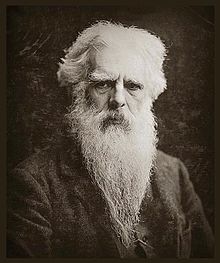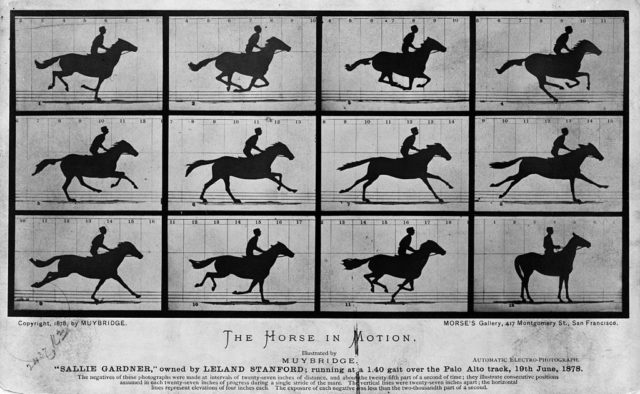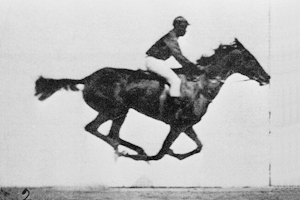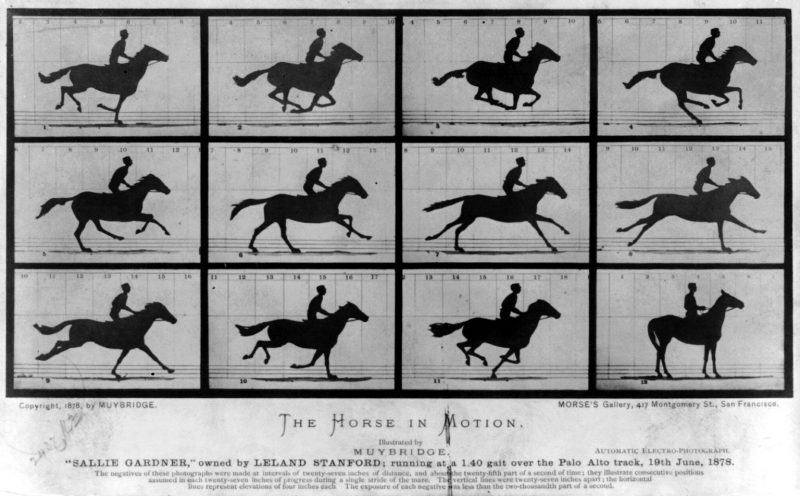Eadweard Muybridge took a series of photographs of a rider on a galloping horse as a photographic experiment on June 15, 1878. The horse’s name was Sallie Gardner, a Kentucky-bred mare, and Muybridge used multiple cameras to photograph her as she galloped past.
The project was financed by Leland Stanford, who owned a farm where he bred, trained, and raced horses. He bred horses for both the trotting races in which Standardbreds pull a sulky with a driver and the races in which Thoroughbreds are ridden by jockeys and run at a gallop. Stanford became interested in Muybridge’s photos when he had visited the farm to take photographs of his trotter, Occident. Stanford wanted to examine a horse’s gait to see if at any time all four of the horse’s feet were off the ground. His goal was to improve his horses, and photography seemed to be the way to visualize what needed to be done. So in the presence of the press, Stanford’s horse, Sallie Gardner, was photographed in Palo Alto.


Muybridge arranged the cameras along the track in a line parallel to the horse’s path, and twenty-four of them were placed 27 inches apart. To activate the shutters, the horse hit trip wires as she galloped past, allowing the photographs to be taken in increments of approximately one twenty-fifth of a second as the horse raced past.
The jockey kept the horse at a pace of one mile per 1 minute and 40 seconds. The photographs show at some points in the run that, indeed, all four of her feet were off the ground. When the individual photos were run in sequence, they clearly show the kinetics of a galloping horse. Muybridge developed and produced the prints on site and the press was could tell from the broken straps on Sallie’s saddle that all the photos were authentic. Scientific American even carried reports of his ground-breaking photography. The pictures were first projected onto a screen in 1880 when Muybridge gave a presentation at the California School of Fine Arts; this would have been the first exhibition of a motion picture.

Stanford and Muybridge’s relationship became strained in 1882 when Stanford commissioned the book A Horse in Motion.
It contained illustrations based on Muybridge’s photography, but no mention was given of the photographer other than as a Stanford employee. Due to this, the funding that Muybridge was offered to continue further photographic work of animal movement was withdrawn. Furious, he filed a suit against Stanford that was eventually dismissed.

Muybridge continued to work on capturing animal locomotion. After completing two years of study, he created 19 x 24-inch collotype plates that were inserted in 36 x 36-inch frames. He accumulated 20,000 plates of images.
Of the plates that were published, 514 were of women and men in motion, 16 plates showed children, 27 plates depicted abnormal female and male movement, and 219 plates had animals for the subject. This collection was titled An Electro-photographic Investigation of Consecutive Phases of Animal Movements.
